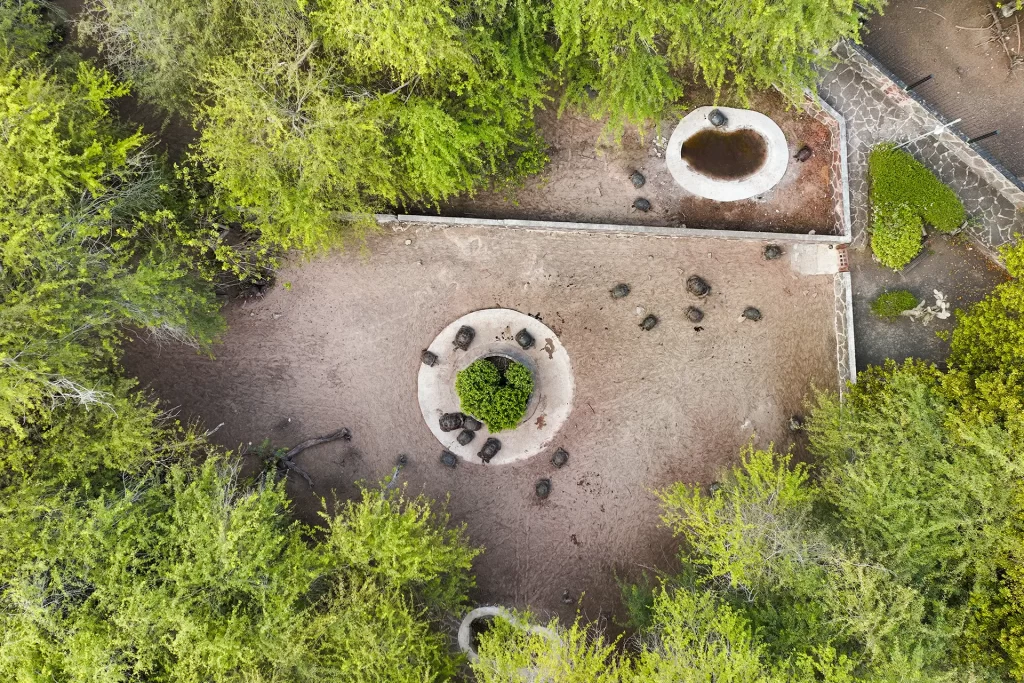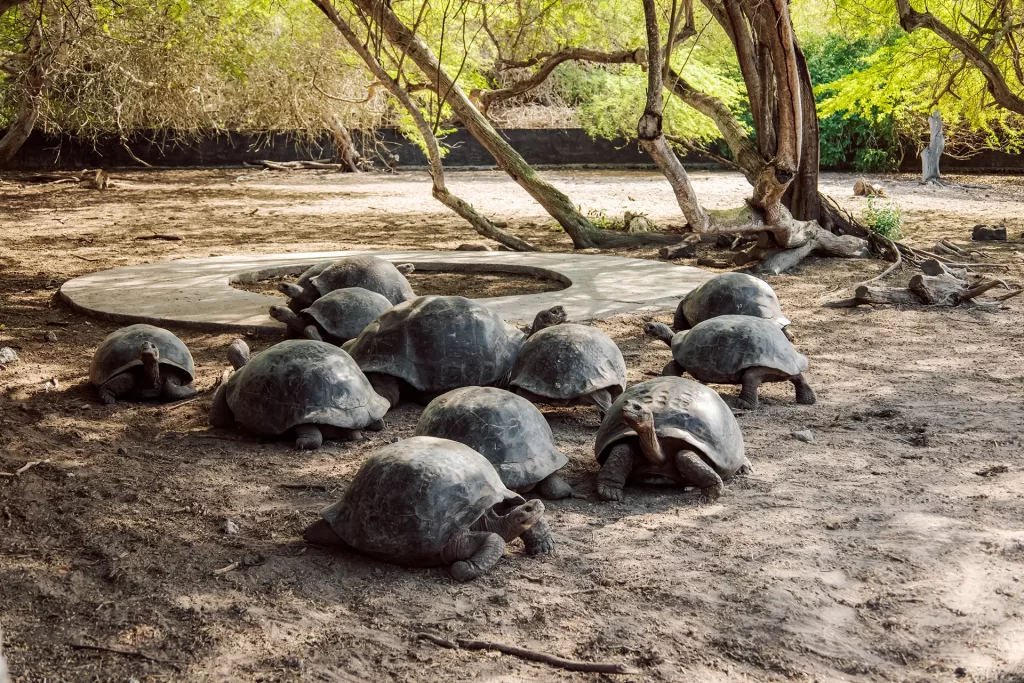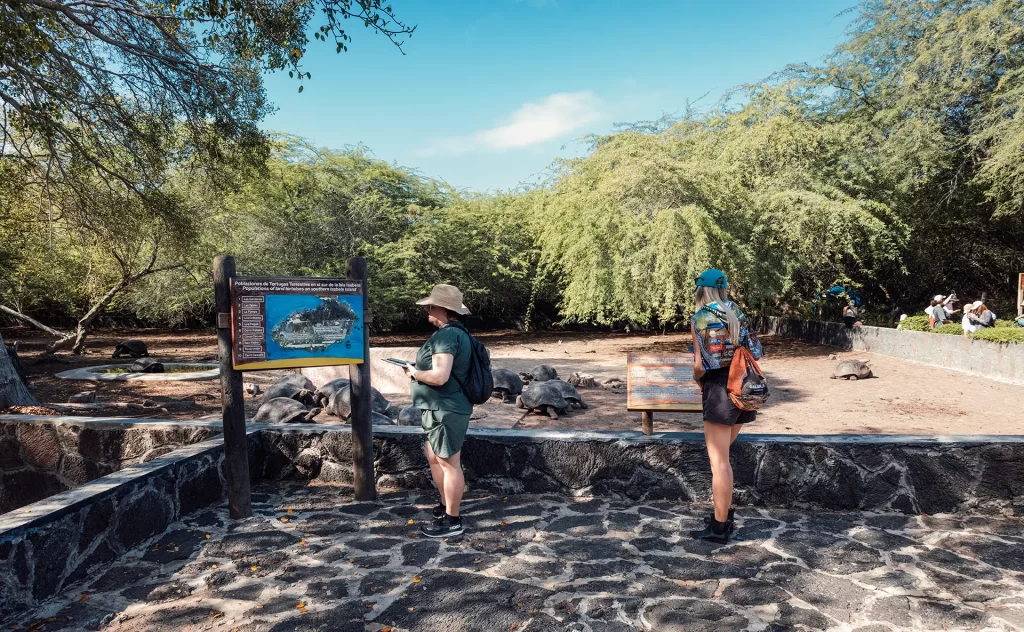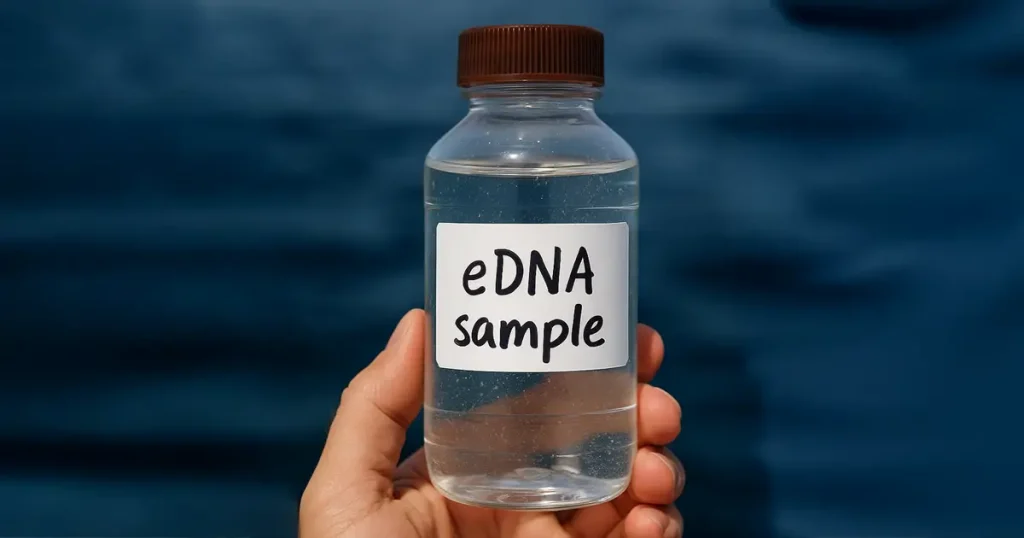Isabela’s Giant Tortoise Breeding Center Gets Upgraded

Isabela Island, one of the four inhabited islands in the Galápagos Archipelago, boasts thriving biodiversity at its most vibrant. Significant efforts are underway to ensure the long-term well-being of the island’s iconic giant tortoises. These majestic creatures play a vital role in maintaining biodiversity and the delicate ecosystems of Galápagos. However, despite their importance, these tortoises constantly encounter challenges to their survival.
As part of the project “Strengthening the Responsiveness and Management Capacity of the Galápagos National Park Directorate in Protected Areas,” funded by Galápagos Conservancy, we are committed to implementing essential measures to enhance the protection of these giant tortoises.
A key component of our initiative is the revitalization of the “Arnaldo Tupiza” Breeding Center in Puerto Villamil, a crucial sanctuary for these magnificent creatures. Established in 1997, the center spans two hectares devoted to the breeding and care of giant tortoises. The success of the activities here is ensured by the unwavering commitment of park rangers and volunteers, as well as strict safety protocols and ongoing support from a Galápagos Conservancy conservation officer.
Improving the Giant’s Home
The Center’s first phase of optimization took place in 2020, when we made significant improvements to both the juvenile tortoise pens and the incubation system. Currently, our efforts are focused on optimizing the breeding pens, particularly the access ramps, pools, and feeding sites. The main goal of these actions is to provide optimal conditions for breeding tortoises. These enhancements have made it easier for the staff to provide effective care for the tortoises while minimizing unnecessary disruptions to them.
Specialized Care for a Sustainable Future
Our General Director, scientist Washington Tapia, emphasized that “the Isabela Breeding Center, along with those on Santa Cruz and San Cristóbal Islands, serves as both a conservation tool for the recovery of the most endangered populations and an important contributor to the economy of Galápagos. The center is a popular tourist destination and a beloved spot for local families to visit.”

Captive-born tortoises play an important role as ecosystem engineers when they return to their natural habitats. They actively shape the landscape through their foraging and movements, contributing to the dynamics of plant communities by dispersing seeds. This cycle emphasizes the close relationship between these animals and the overall health of Galápagos ecosystems.
Vision for the Future
The recent upgrades done to the “Arnaldo Tupiza” Breeding Center aim to improve the facilities while also demonstrating a renewed commitment to the conservation and well-being of giant tortoises. With each of these majestic creatures on the path to recovery and harmonious coexistence, every effort helps to ensure a sustainable Galápagos.
Thanks to the generous contributions from our supporters and conservation enthusiasts, Galápagos Conservancy plays a crucial role in protecting and conserving the unique biodiversity of the archipelago. The optimization of Isabela Island’s Breeding Center represents a significant step towards a future in which giant tortoises thrive, shape their natural habitats, and remain one of the primary animal wonders on southern Isabela Island again.




